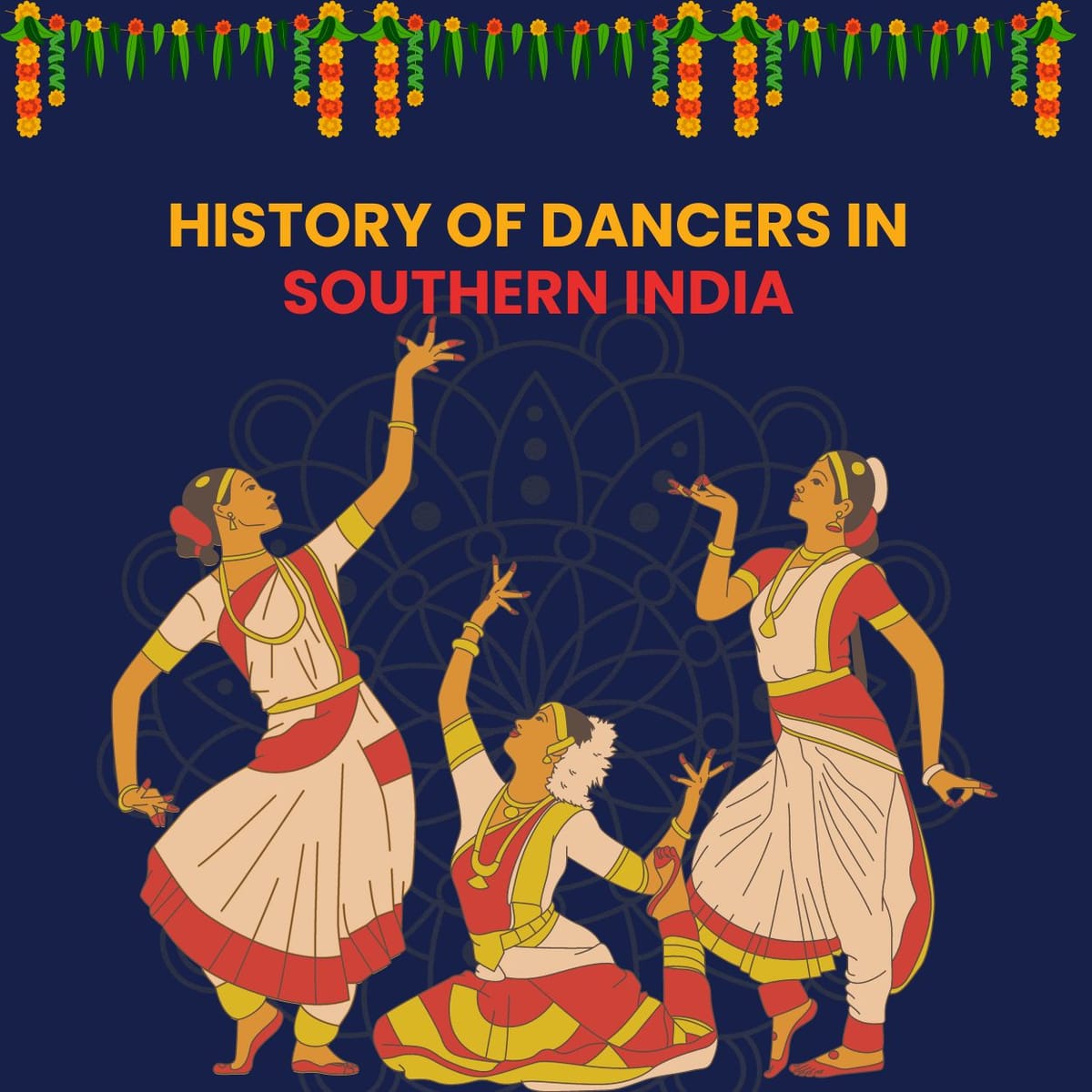
Table of Contents
Dance has been an integral part of celebrating Indian traditions and culture. One such dance form is Bharatnatyam which originated in Tamil Nadu.
1. Origins of Bharatnatyam
The dance form now known as Bharatanatyam was previously referred to as Sadir attam or Saniattam, among other names. It was initially performed as part of daily rituals in temples or during temple festivals, and also in the King’s court.
2. The Devadasis
The dancers who practiced this art were known as thevaradiyal. The term 'thevar' translates to God and 'adiyal' to servant, emphasizing their sacred role. They were also known by other names such as talicceripentukal, manikkam, rudraganikai, nakkan, and eventually as devadasis in later periods.
3. Status and Power of Devadasis in the Medieval Era
During the medieval era, these dancers had significant status and power. They were believed to bring fortune, prosperity, and protection to the king and the kingdom. The temple authorities and the king often granted them land, and they were highly esteemed by both temple authorities and devotees.
4. Sacred Rituals and Devotion
In places like Thiruvarur, devotees would even prostrate at the footprints of a devadasi, collecting the sand and considering it to be sacred. They were the consorts of God, a status attained through the ritual of pottukattudal, where they were initiated to symbolically marry God. Pottu means golden chain and kattudal means to tie. This meant they were free from widowhood and hence they were also known as nityasumangali, which meant ever auspicious.
5. Daily Duties and Rituals in Temples
Devadasi-s were considered an integral part of auspicious life functions such as births, ear piercings, marriages, and puberty ceremonies.
Their duties included performing daily rituals at the temple such as cleaning, decorating, and lighting lamps, as well as dressing the deity and performing aarti (a ritual of waving lamps to ward off evil). During nitya puja (daily rituals) like sayee rakshita and arti yamam, devadasis would dance, demonstrating the rituals happening inside the main sanctum to devotees who were not allowed inside. These rituals included the shadopachara, which are the sixteen offerings made to God, such as mirrors, various types of aartis, flowers, incense, and fans. They also played an important role in temple festivals, where they would dance before processions carrying the God.
Devadasi-s were considered an integral part of auspicious life functions such as births, ear piercings, marriages, and puberty ceremonies. A group of Devadasi-s would gather at the person’s house and sing mangala gita (auspicious songs), sung only by them. This marked an important life transition for the person while entering into a new stage of life.
6. Honoring the Devadasis
The death of the Devadasi attached to the temple was mourned by the presiding Deity of the temple. The departed were granted the highest respects and honors following their passing to the other realm. The intricate link between the dancer devotee and the deity she was wedded to was evident as God himself observed ‘theetu’ or ‘affliction’ also known as munnu mukkala gati and no temple rituals were performed during this time. The devadasi's pyre would be brought to the temple, placed near the gopuram (main entrance), and offerings such as a garland from the God, a new saree, flowers, and prasadam would be presented to honor her - the Devaradiyal who spent her life wedded to and serving her Lord, the deity of the temple.
7. Conclusion
In summary, we trace back the dance performed today to the history of this community which has been an important and significant part of all the religious, cultural, and social aspects of the society.
Written by
~ Kartika Sanjvalla
Bharatnatyam Trainer
